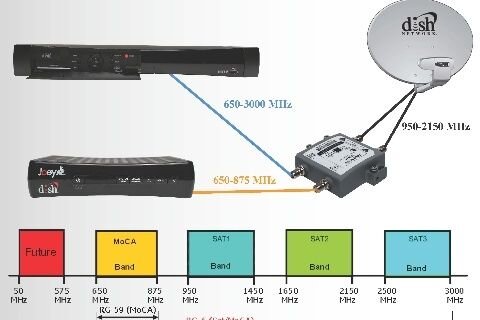Am i correct in the understanding that the frequencies that Dish is using for the hopper are even higher than what they've used on the DPP equipment?
The older DPP using somewhere between 950 to 2150mhz and the new hopper RG6 requirements from 650 to 3000mhz (with 50 to 575mhz allocated for future use)?
Will those higher frequency requirements make it even more stringent to use RG6 for the new hopper than the older DPP system? I know in the past some people have gotten away with short runs of high quality RG59 on the older DPP equipment but am wondering how much less forgiving this new hopper system will be.
Of course this is specifically for the hopper requiring RG6 as the joeys only require RG59 as long as you only have 1 tap or less in the system. I attached the week 1 training pdf to this post that shows the frequencies.
___________________
My reason for asking is i have some very very old RG6 cabling for the home distribution, but it's been working perfectly with dish DPP equipment for about 4 years with zero tech visits.
The older DPP using somewhere between 950 to 2150mhz and the new hopper RG6 requirements from 650 to 3000mhz (with 50 to 575mhz allocated for future use)?
Will those higher frequency requirements make it even more stringent to use RG6 for the new hopper than the older DPP system? I know in the past some people have gotten away with short runs of high quality RG59 on the older DPP equipment but am wondering how much less forgiving this new hopper system will be.
Of course this is specifically for the hopper requiring RG6 as the joeys only require RG59 as long as you only have 1 tap or less in the system. I attached the week 1 training pdf to this post that shows the frequencies.
___________________
My reason for asking is i have some very very old RG6 cabling for the home distribution, but it's been working perfectly with dish DPP equipment for about 4 years with zero tech visits.


